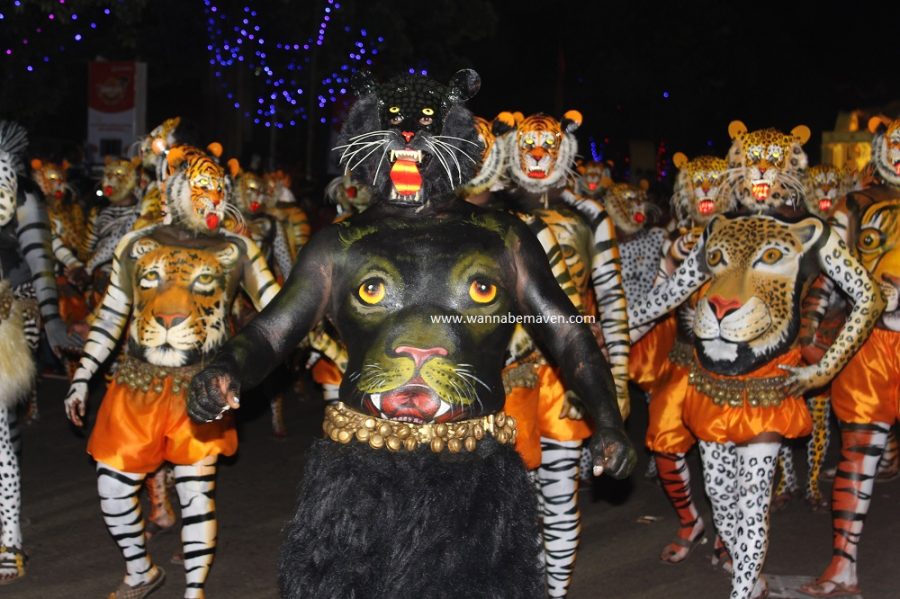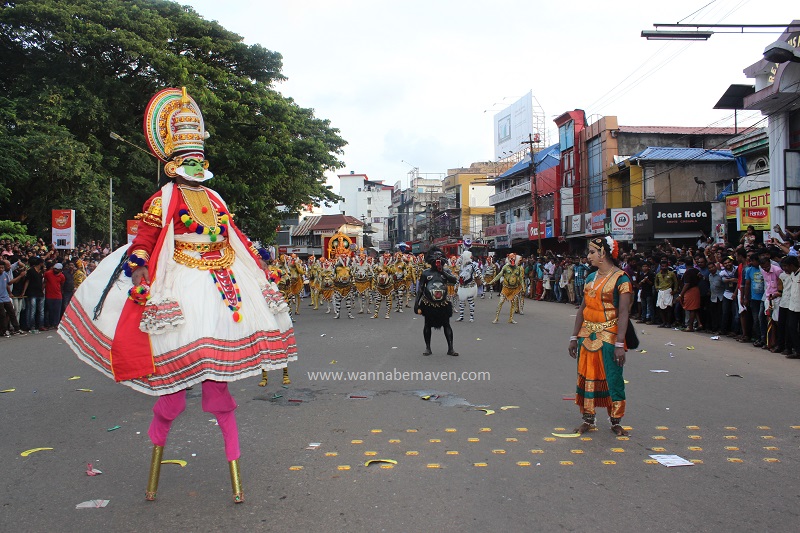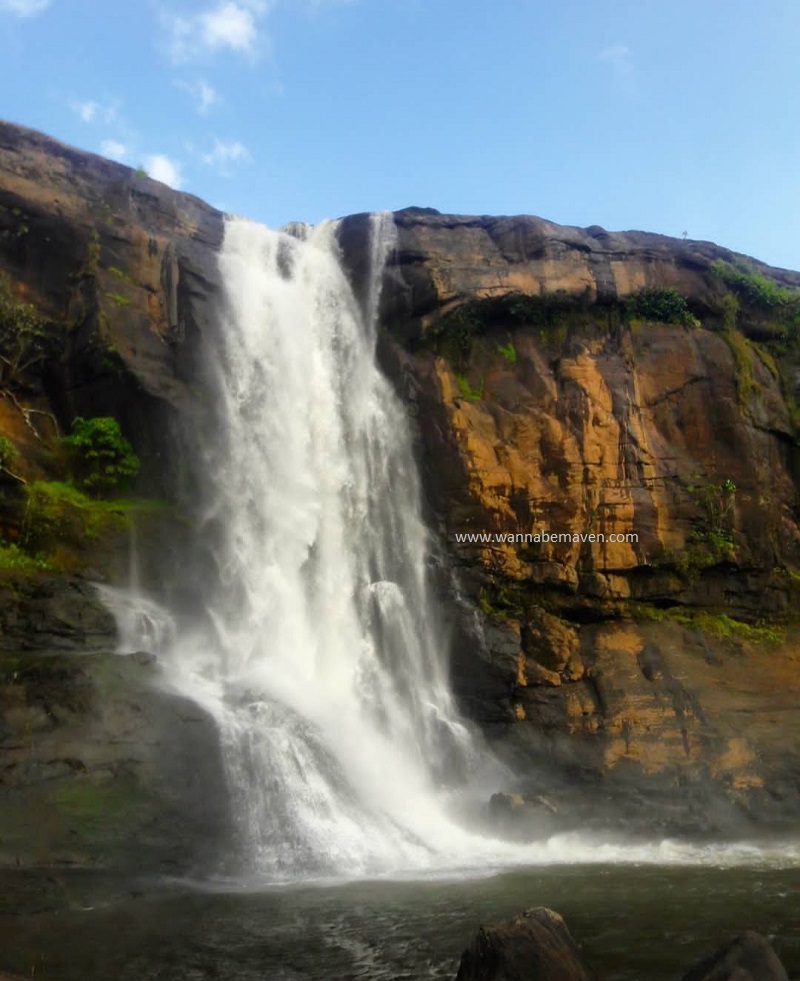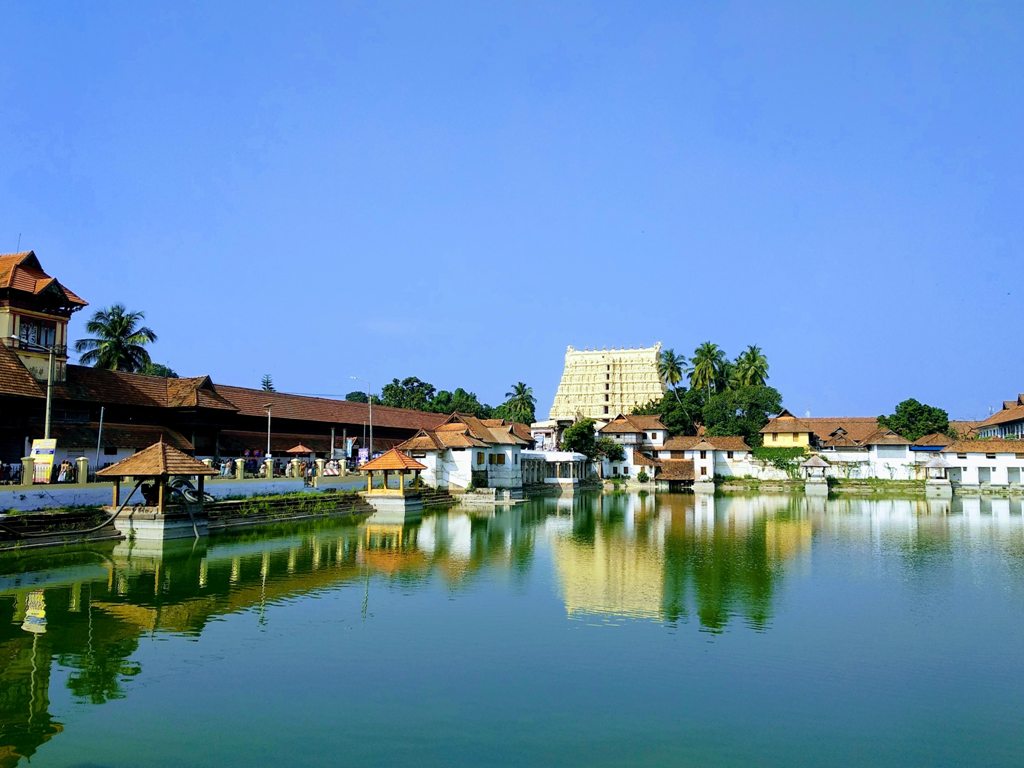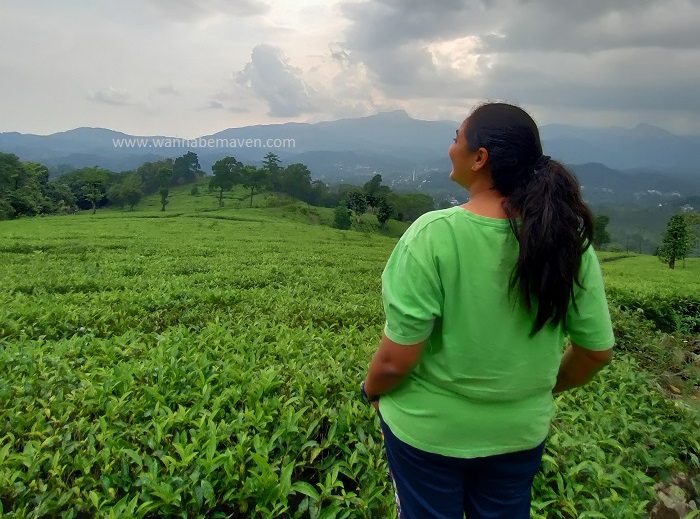My first introduction to Onam is a tale from overseas while studying in Britain. It was a cultural gathering at Trafalgar Square with stage performances, food stalls, foot-thumping music and the coming together of NRI Malayalis and Non-Malayalis to celebrate this festival of harvest far away from their motherland. Years later, I embarked on a journey of my own to trace the origins of Onam festival in Kerala and find the best places to celebrate.
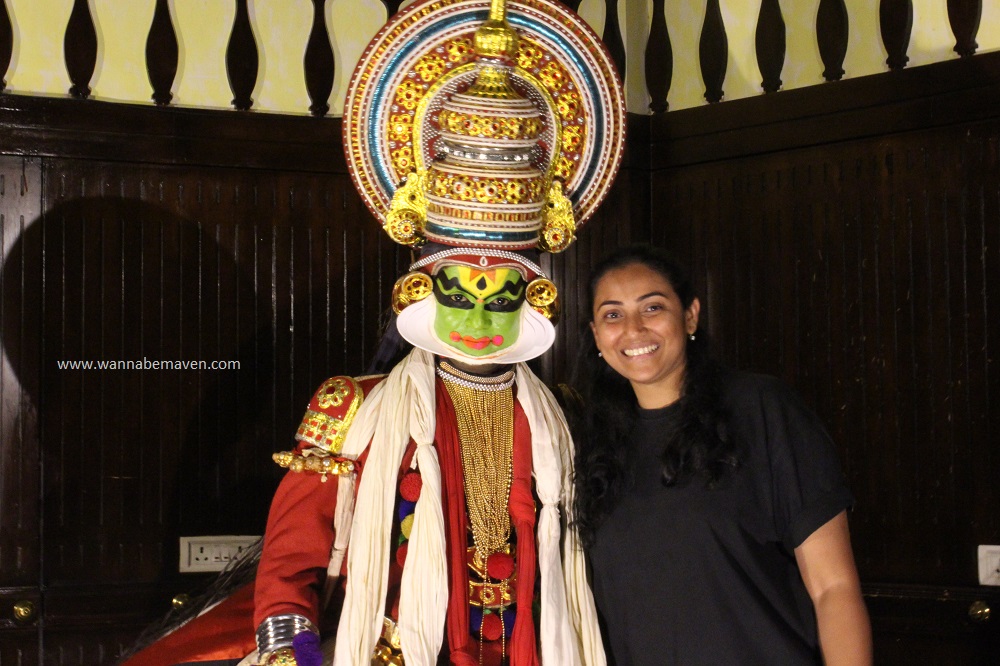
Onam Festival in Kerala: Homecoming of a King
It is 8 am when I arrive in Kochi, Kerala’s commercial capital and biggest tourist hub. The streets are unusually empty. I presume commerce is yet to begin, unlike Mumbai, a fast-paced city that never sleeps. However, well into the afternoon, when the scene remains unaltered, I enquire with my driver, who tells me that Onam is off-season in Kerala. Malayali families stay home and celebrate the Onam festival in Kerala with their loved ones. Men dress up in crisp white mundus (lungi) and apply chandanam (sandalwood) on their foreheads. Women exude grace in their cream and gold sarees with jasmine flowers tucked in their hair. It’s an auspicious time to purchase gold for the house. Varieties of ghee-drenched sweets are prepared, and elaborate rituals are performed for the next ten days.
I notice huge billboards on the streets of a smiling man with a handlebar moustache, a golden crown and an umbrella. He’s everywhere, selling everything from gold to toothpaste. It’s the mythical King Mahabali, and Onam is the festival that marks his homecoming to Kerala.
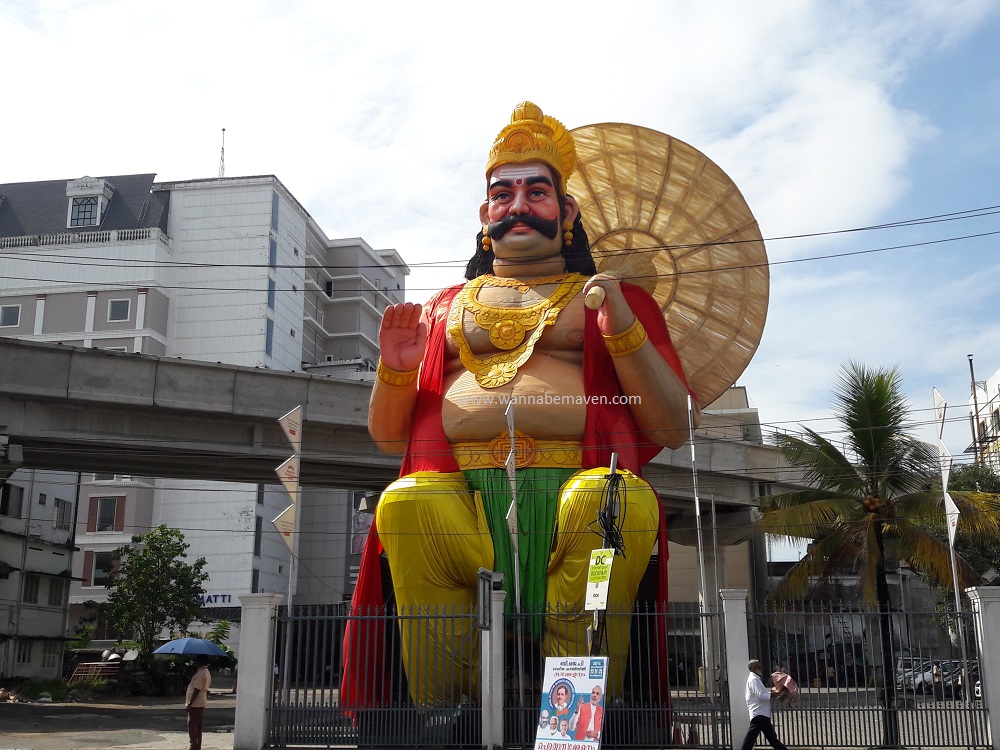
Onam festival in Kerala – History
If legends are believed, Mahabali was an Asura (demon) king. He was a compassionate ruler whose reign was considered the golden period of Kerala. However, Lord Indra grew concerned about King Mahabali’s popularity, so he sent Lord Vishnu in the form of a young Brahmin monk – Lord Vamana – to banish Mahabali and send him to pataal (hell). Mahabali appealed to the gods to let him return to Kerala once a year to ensure that his people were still happy and content. His wish was granted, and King Mahabali visits his people and his land during the Onam festival in Kerala each year.
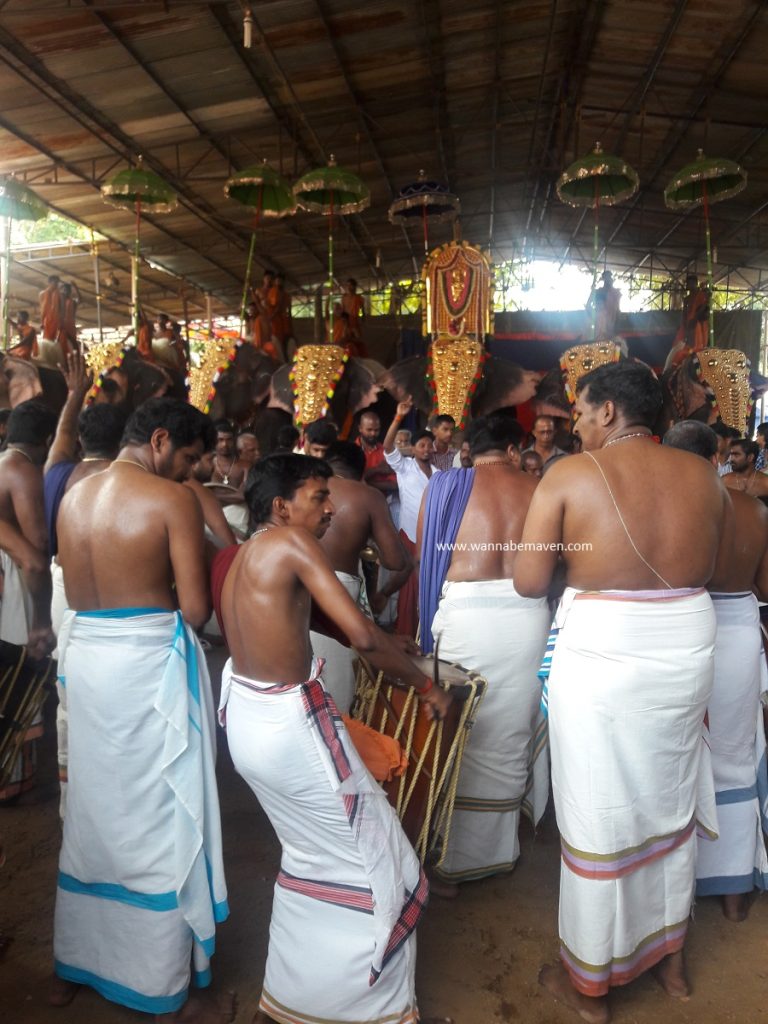
Pookalam (Rangoli) during Onam festival in Kerala
I arrive at my homestay in Fort Kochi, where I am greeted to an elaborate flower rangoli at the doorstep. My host tells me that the floral decoration is called Pookalam – it marks the beginning of the Onam festivities. The term is local for flower (Poo) and artwork (kalam). At the break of dawn, Malayali women bathe and perform their morning prayers before creating these floral decorations in front of their houses to welcome King Mahabali. The rangoli decorations continue during the ten days leading up to Onam. Several pookalam competitions are organised during this period among housing societies, corporate offices and shopping malls.
Thrikkakara – Birth place of Onam festival in Kerala
I take a cab the next morning, to visit the temple town of Thrikkakara, 20 kilometres from Kochi. My focal point of interest here is the Vamanamoorthy Temple (also called the Thrikkakara Temple). Legend has it that Lord Vamana sent King Mahabali to pataal by placing his foot on Mahabali’s head – the temple is located at the site, where the incident took place.
A special flag hoisting ceremony is organised on Atham, the first day that marks the beginning of the festivities at the temple. Celebrations will continue for the next ten days, but the mainstay is the grand procession, Pakalpooram, on the day before Thiru Onam, the tenth and most important day. The deity of Lord Vamana is carried around the temple complex on an elephant, followed by a parade of more elephants, all covered in nettipattam (a golden head accessory). The air is thick with the scent of fresh flowers, incense, and coconut oil, and the entire mood is distinctly festive.
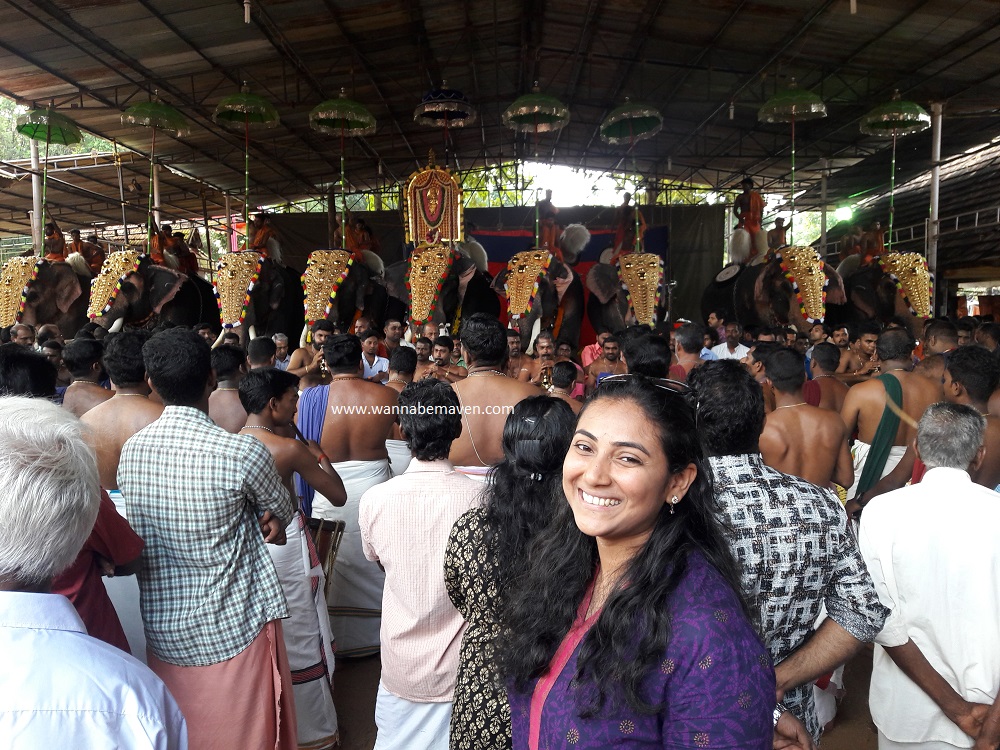
Each day, the celebration will culminate with a grand feast called the onasadya, a traditional vegetarian meal of numerous courses served on a banana leaf. The temple kitchen is an organised chaos where volunteers dish out meals to thousands of devotees at breakneck speed. The meal is wholesome – from Avial (vegetables in a coconut gravy) to Olan (white pumpkin and red gram stew), Payasam (Jaggery-based dessert with thickened milk), Kerala Matta rice, Upperi (banana chips), Sarkara varatti (Jaggery coated banana chips) and more.
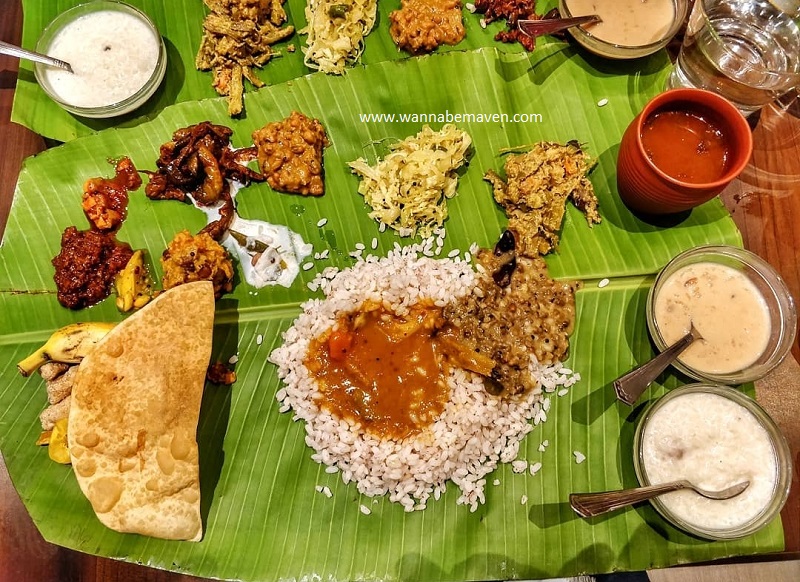
Thrissur for chasing Onam festival in Kerala
Shortly, I move from Kochi towards Thrissur, the cultural capital of Kerala to continue my Onam trail. There’s a visible difference between both the towns, Thrissur being more mellowed down. I befriend the General Manager, Melvin, at my hotel, who makes it his mission to help me chase the Onam celebrations in Thrissur. Melvin’s local knowledge is of great help as he shares with me venue details and timings for celebrations on the go – many of these would hardly ever find a mention on the internet.
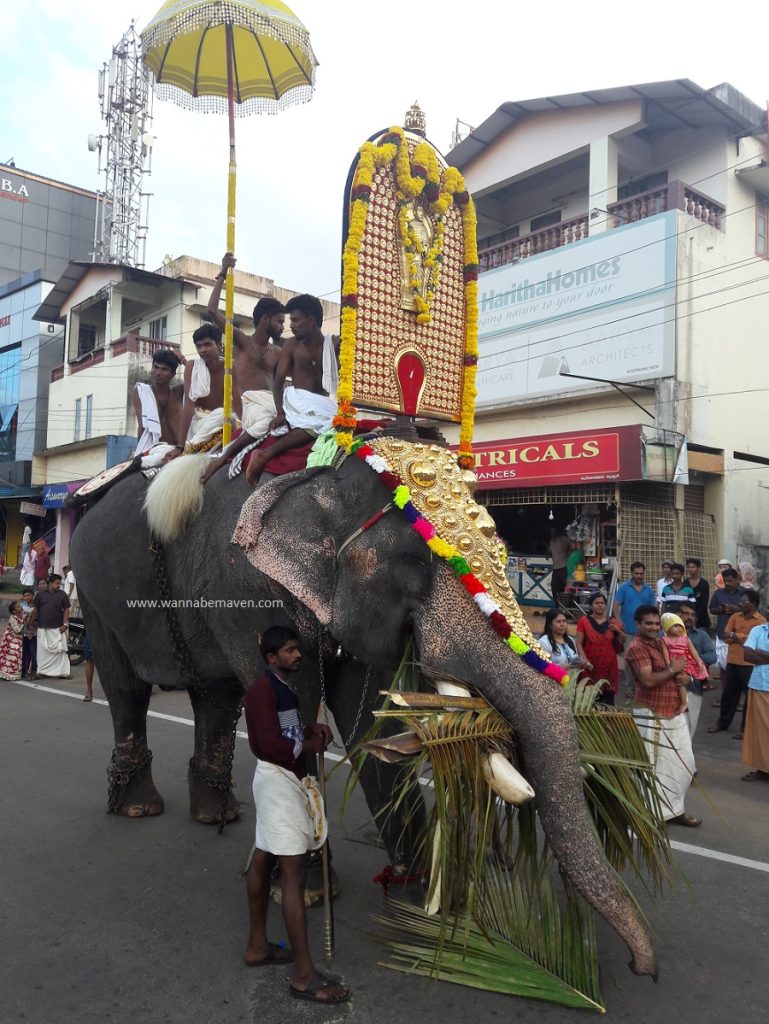
Kummattikali during Onam festival in Kerala
I begin Day 3 with a visit to a suburban neighbourhood to watch the Kummattikali festival. Malayali men are dressed from top-to-toe in a grass-clad costume, wearing colourful masks (Kummatti) of characters from the Hindu scriptures like Krishna and Narada. They take to the streets entertaining the crowds with their antics and collecting alms from house to house. I merrily join in their procession and find myself moving to the beats of the chenda melum (percussion instrument). The jolly energy in the air is contagious.
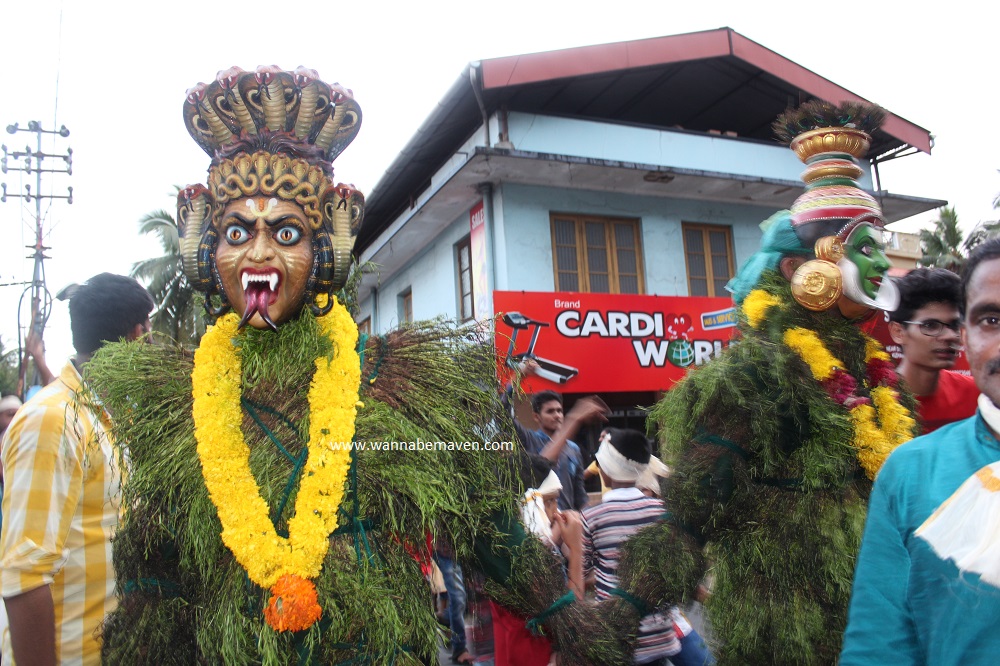
Snake boat race during Onam festival in Kerala
Later that evening, I head to a village on the outskirts of Thrissur. Melvin tells me I can watch a snake boat race, another important cultural symbol of Onam. Villages form their teams and sign up for a boat race that can win them cash prizes and the coveted title of champions of the local district. The host’s running commentary on the loudspeaker in Malayalam is incomprehensible, but I’m sucked into the tense atmosphere, craning my neck among the sea of people standing by the backwaters to watch this nail-biting race to the finish line.
I’m told that the oldest and best snake boat races during the Onam festival in Kerala are organised in the Aranmula village on the banks of the River Pampa in the Pathanamthitta district of Kerala, 50 kilometres from Alleppey. Palliyodams, Aranmula’s unique snake boats make for a majestic sight, as teams move in pairs skillfully mirroring each other in a spectacular race that often leaves the crowd spellbound.
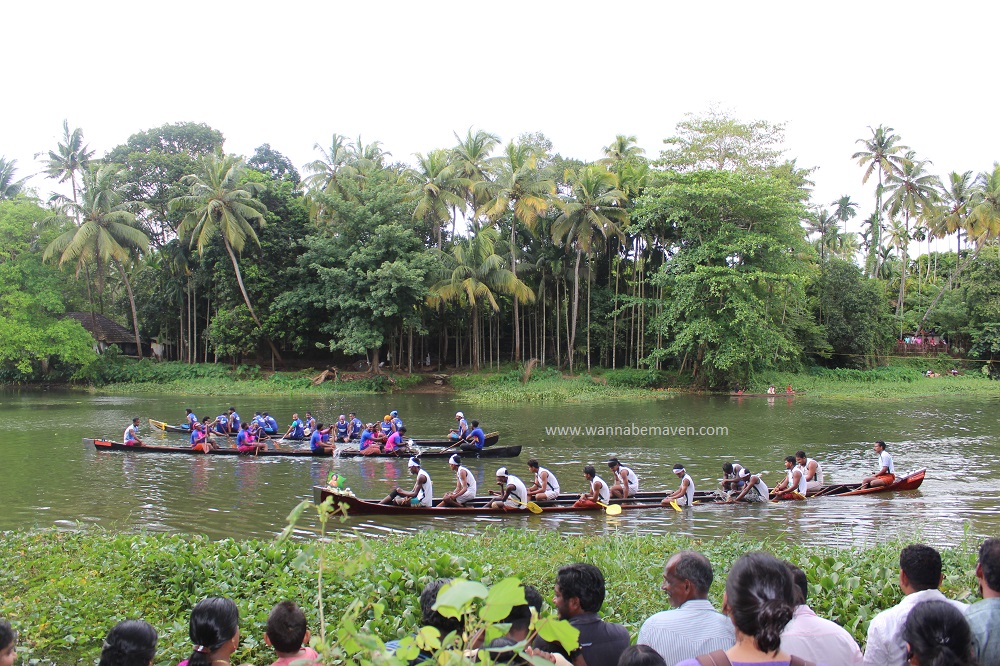
Puli Kali Tiger dance during Onam festival in Kerala
On the fourth and last day of Onam, I head to Swaraj Circle in the heart of Thrissur city, where the annual Puli-kali or tiger dance parade takes place. The Maharaja of Cochin introduced this folk dance some 200 years ago, as he wanted the celebrations of Onam to reflect a wild fervour. Hundreds of men spend hours painting intricate tiger markings on their bodies. Later, they take to the streets, recreating the tiger’s prowling movements with flair. Gigantic floats are decorated that look surreal – from a multi-coloured lion to a towering Shiva sculpture standing over a demon. There’s a wedding scene being enacted at one corner, while Mowgli and Bageera are having a jolly good time at the other end. Garuda, Draupati and a ‘hulk’ styled Hanuman show up to amuse the crowd. By the end, the best costume and the grandest float would be rewarded with hefty prizes.
After four days of soaking in the cultural revelry, I reach the end of my Onam festival trail and return home a happy traveller, fascinated by Lord Mahabali’s story of homecoming to visit his people. There’s a reason they call Kerala ‘God’s own country’!
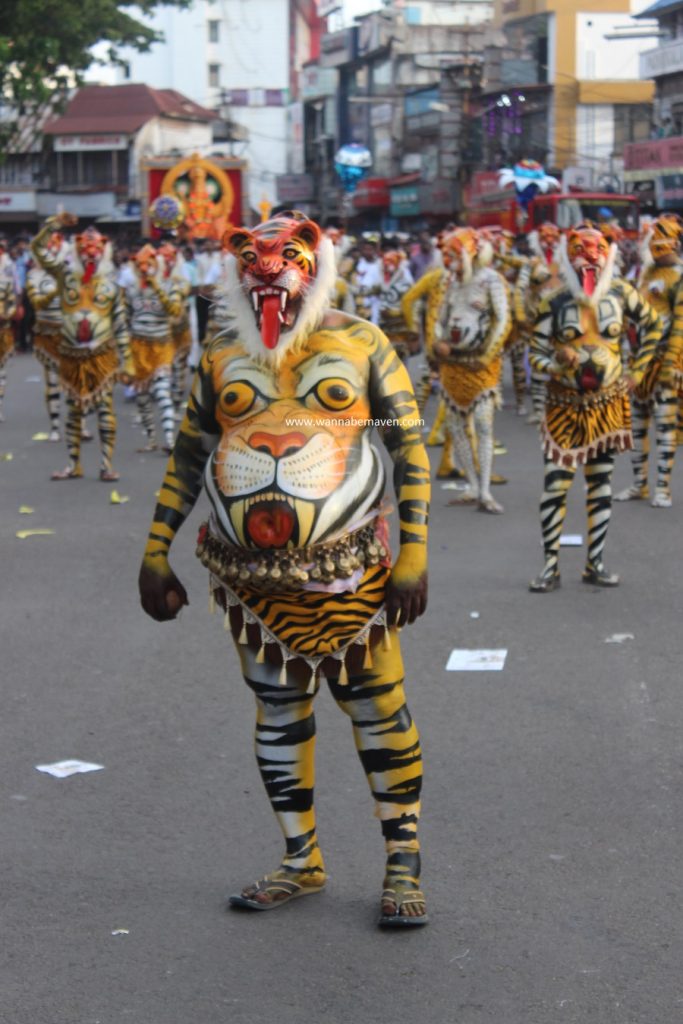
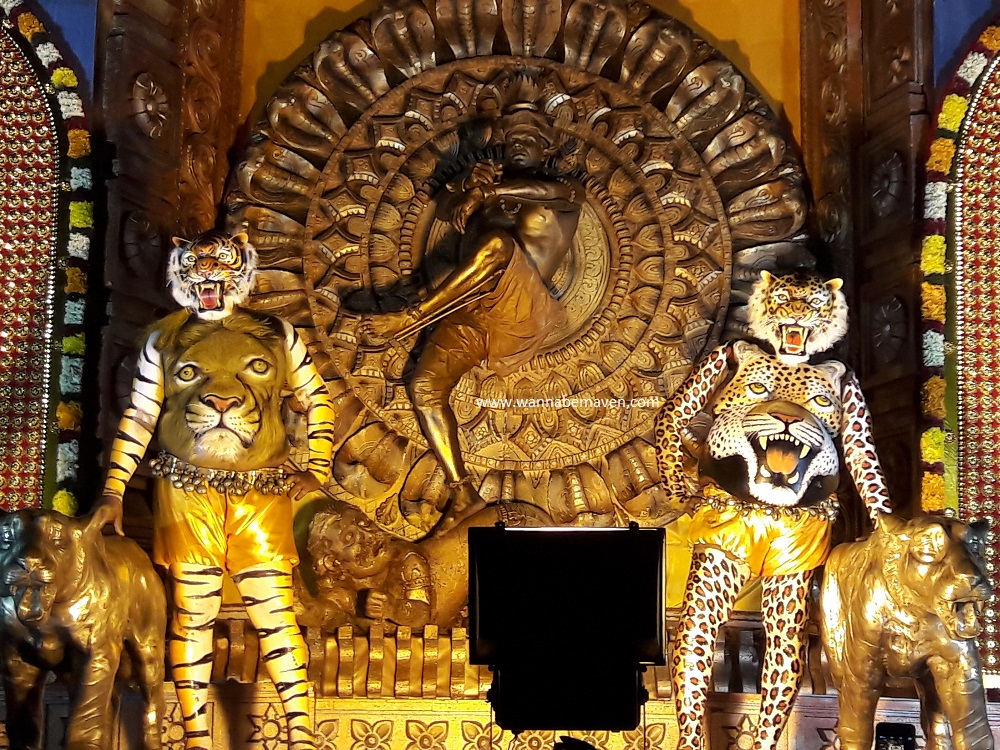
Things to do in Kochi
1. Plan a walking tour of Fort Kochi and explore the iconic Fort Kochi area known for its colonial architecture and charming streets. Don’t miss the iconic St. Francis Church and the Santa Cruz Basilica.
2. Visit Mattancherry Palace or the Dutch Palace with artifacts from the Kochi royal family.
4. Observe the unique Chinese Fishing Nets
5. Enjoy a Kathakali performance and Kalaripayattu at the Cochin Cultural Centre
6. Visit the Jewish Synagogue in the heart of the Jew Town in Mattancherry; and buy some spices from the shops.
7. Experience the famous Kerala backwaters by taking a leisurely cruise on a houseboat.
8. Sample the local cuisine of Kerala – Don’t miss trying the famous Kerala-style fish curry, appam, and puttu.
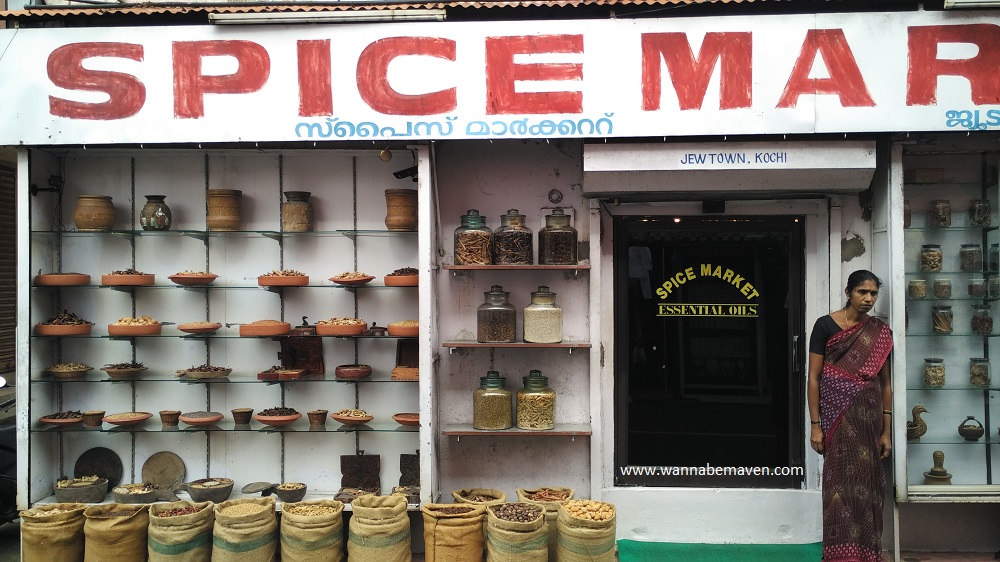
How to reach Kochi
Kochi International Airport is fairly busy with many domestic and international flights from major cities. From the airport, you can take a taxi or a rental car to reach your destination. Kochi also has two major railway stations: Ernakulam Junction and Ernakulam Town – both are well-connected to various cities in India. For intercity travel between Kochi and Thrissur, we took the Kerala State Transport (KSRTC) buses that reached us in 2.5 hours. You can also hire a rental cab, the distance between the two cities is 85 km or two hours via NH544. There are also frequent train services between Kochi and Thrissur that takes about 1-2 hours.
Where to stay in Kochi
In Kochi, we stayed at Forte Kochi in the Fort Kochi area. It’s a great boutique hotel and you get to stay in the most happening area of Kochi. Eighth Bastian CGH Earth is another option if you want to stay in the Fort Kochi area.
I highly suggest staying in the Fort Kochi area where all the tourist action is. You may find cheaper hotels in Ernakulam but it is a business district, away from Fort Kochi.
Things to do in Thrissur
1. Explore the ancient Vadakkunnathan Temple, dedicated to Lord Shiva. It is one of the oldest and largest Shiva temples in Kerala.
2. If you visit Thrissur in April or May, don’t miss the spectacular Thrissur Pooram festival. It is one of the most famous temple festivals in Kerala, featuring grand elephant processions, fireworks, and traditional music performances
3. Do a short road trip to Athirappilly Waterfalls, one of the largest waterfalls in Kerala, where the film Bahubali was shot.
4. Visit the nearby town of Guruvayur, known for the famous Guruvayur Temple – an important pilgrimage site for the Hindus.
Where to stay in Thrissur
In Thrissur, we stayed at Hotel Merlin International very close to Thrissur Railway station. The manager, Melvin, was super helpful in suggesting local Onam celebrations we could check out. If you have a slightly higher budget, Hyatt Regency or Joys Palace are great options.
Practical travel tips for chasing Onam festival in Kerala
1. Onam follows the Malayalam calendar. The most accurate information you will find is on the Kerala tourism website. That said, don’t completely rely on the information available on the internet. Check with a local.
2. Both Kochi and Thrissur are known for their vibrant festivals and cultural events. Check the local calendar to see if any festivals or events coincide with your visit. Thrissur Pooram in Thrissur and the Kochi-Muziris Biennale in Kochi are two major events that attract a large number of visitors.
3. Negotiate prices with vendors if necessary and be aware of potential scams. One example are the fishermen at the Chinese fishing nets that offer to operate the pulley and ask you for money later.
4. Dress appropriately when you visit religious sites including churches. Generally, avoid sleeveless and shorts.
